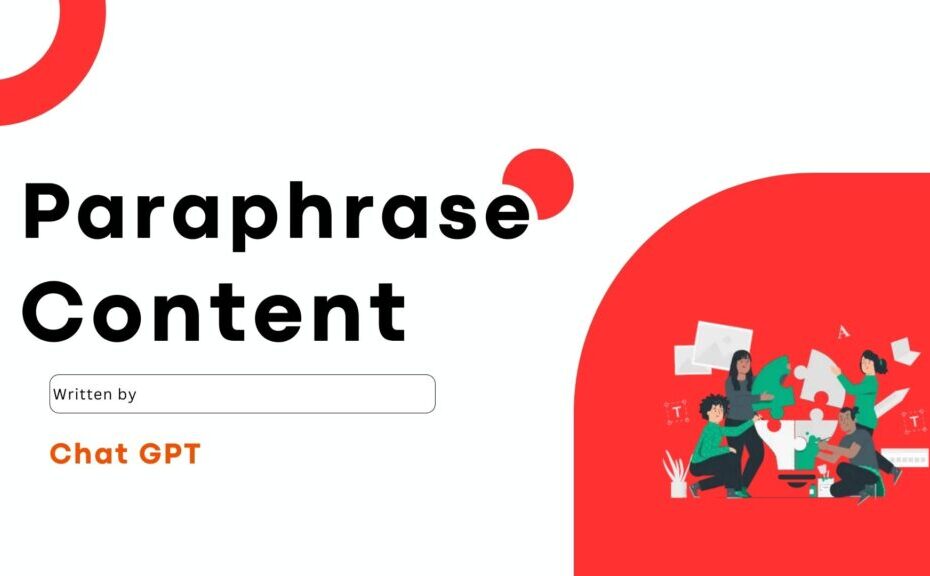ChatGPT‘s launch took the world by storm, dazzling people with its human-like conversational abilities. However, many discovered its impressive outputs still need refining. Directly copying them can misrepresent information. More importantly, passing off ChatGPT‘s words as your own equates to plagiarism.
You need to thoroughly paraphrase AI-generated text into your own voice first.
In this guide, we’ll unpack ChatGPT‘s inner workings and obstacles for paraphrasing, effective strategies to overcome them, and how AI tools significantly ease the rewriting process.
Demystifying ChatGPT: Awe-Inspiring, Yet Limited
ChatGPT showcases remarkable progress in natural language AI – the ability for computers to analyze, understand, and generate written or spoken human language.
It owes its skills to a large language model called GPT-3, trained on vast datasets:
GPT-3 was fed 45TB of text data including Wikipedia, news articles, textbooks, HTML pages, and more!
With this extensive education, ChatGPT cans convincingly discuss an incredible range of topics while sounding human.
However, since GPT-3 just identifies patterns from its training data, it has crucial blindspots:
| Limitation | Impact on Paraphrasing |
|---|---|
| No real-world knowledge | Harder to fact-check outputs or clarify meaning |
| Generates text devoid of context | Risk of misinterpreting intent |
| Outputs can be inaccurate | Propagating false info if paraphrased as-is |
Furthermore, ChatGPT reflects the biases and flaws of its imperfect training data. Without the proper lens while paraphrasing, repeating questionable content is easy.
These deficiencies make thoughtfully rewriting ChatGPT a tricky, nuanced endeavor.
Why Paraphrasing Matters More Than Ever
Paraphrasing – expressing concepts in your own words – is now essential when leveraging ChatGPT:
23% of people admit to plagiarizing content written by AI without citation
This deception has consequences:
- Legal: Copyright infringement suits for unattributed copying
- Academic: Failing assignments or expulsion per plagiarism policies
- Professional: Job loss over integrity concerns
Plus, attributing AI-written text properly showcases your skill curating and refining content rather than just commissioning it.
That said, reinventing ChatGPT‘s unique style effectively while preserving meaning brings formidable challenges.
Common Paraphrasing Pitfalls
When working with AI-written text, many trip up while attempting to paraphrase:
Losing Meaning
Some parts may be too complex to easily simplify further without losing meaning.
Propagating Misinformation
You risk spreading incorrect data from ChatGPT outputs without realizing.
Fumbling Context
Lacking the original context ChatGPT was given makes sections hard to accurately rephrase.
Imitating Style
ChatGPT has a very distinct writing style. Subconsciously adopting the same patterns or word choices can occur.
You must be vigilant to avoid these pitfalls while rewriting.
Tips for Paraphrasing Like a Pro
Follow these best practices for reinventing ChatGPT content effectively:
Analyze Thoroughly
Carefully read the original text multiple times until you can recall the essence of what‘s conveyed without needing to refer back to it. This establishes a strong basis for paraphrasing.
Double Check Facts
Verify any questionable claims or data points from additional authoritative sources. Wikipedia summaries on the topic help quickly orient you.
Explain Complex Concepts
Some technical or advanced sections may need simplifying by breaking down ideas further or relating them to everyday examples friends would understand.
Change Sentence Structure
Vary length, change order of clauses, shift passive/active voice etc. to diverge from ChatGPT‘s cadence.
Compare With Original
Cross-check your paraphrased portions adequately recreate intended meaning without too closely duplicating verbiage or phrasing.
While doable manually, these steps are extremely labor and time-intensive.
Embrace Paraphrasing Tools to Save Hours
Dedicated AI paraphrasing tools revolutionize rewritten ChatGPT outputs with unprecedented speed and accuracy.
Rather than just swapping synonyms, these tools wholly transform text by:
- Rearranging sentence structure
- Modifying tone, formality
- Substituting equivalent phrases
- Clarifying ambiguities
Benefiting from AI and NLP, they also replicate text meaning remarkably well compared to human efforts:
| Criteria | Human Paraphraser | AI Paraphrasing Tool |
|---|---|---|
| Time to paraphrase a 500 word article | ≈ 60-90 minutes | < 15 seconds |
| Meaning retained | 70-80% | 85-90% |
| Readability improved | Hit or miss | Consistently polished |
On top of huge time savings, advanced tools like QuillBot give you more control via adjusting settings like:
- Formality level
- Word choice complexity
- Sentence length
- Tone
This customization better adapts the output to match your authorial voice.
Of course, still manually review and edit AI paraphrased text. But with the right tool lifting the heavy paraphrasing workload off your shoulders, you can focus on imparting your unique perspectives onto reinvented ChatGPT outputs.
The key is finding an optimal balance between tool assistance and manual oversight. With practice, you‘ll unlock ChatGPT‘s potential while crafting content in your authentic style more easily than ever!
I hope these tips help you overhaul AI-generated text effectively to avoid plagiarism concerns. Please reach out if you have any other paraphrasing questions!
